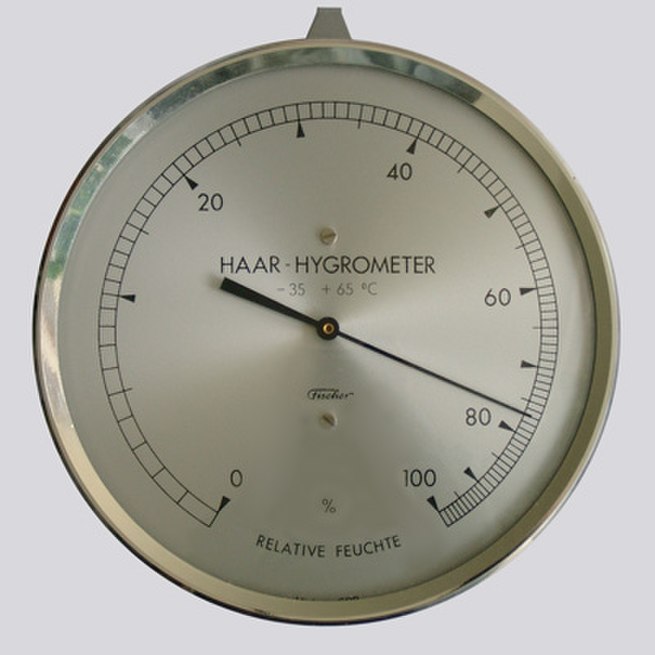
Main Difference
The main difference between Hydrometer and Hygrometer is that the Hydrometer is a laboratory instrument for measuring of density of liquids and Hygrometer is a instrument used for measuring the moisture content in the atmosphere
-
Hydrometer
A hydrometer is an instrument used for measuring the relative density of liquids based on the concept of buoyancy. They are typically calibrated and graduated with one or more scales such as specific gravity.
A hydrometer usually consists of a sealed hollow glass tube with a wider bottom portion for buoyancy, a ballast such as lead or mercury for stability, and a narrow stem with graduations for measuring. The liquid to test is poured into a tall container, often a graduated cylinder, and the hydrometer is gently lowered into the liquid until it floats freely. The point at which the surface of the liquid touches the stem of the hydrometer correlates to relative density. Hydrometers can contain any number of scales along the stem corresponding to properties correlating to the density.
Hydrometers are calibrated for different uses, such as a lactometer for measuring the density (creaminess) of milk, a saccharometer for measuring the density of sugar in a liquid, or an alcoholometer for measuring higher levels of alcohol in spirits.
The hydrometer makes use of Archimedes’ principle: a solid suspended in a fluid is buoyed by a force equal to the weight of the fluid displaced by the submerged part of the suspended solid. The lower the density of the fluid, the deeper a hydrometer of a given weight sinks; the stem is calibrated to give a numerical reading.
-
Hygrometer
A hygrometer is an instrument used to measure the amount of humidity and water vapour in the atmosphere, in soil, or in confined spaces. Humidity measurement instruments usually rely on measurements of some other quantity such as temperature, pressure, mass, a mechanical or electrical change in a substance as moisture is absorbed. By calibration and calculation, these measured quantities can lead to a measurement of humidity. Modern electronic devices use temperature of condensation (called the dew point), or changes in electrical capacitance or resistance to measure humidity differences. The first crude hygrometer was invented by the Italian Renaissance polymath Leonardo da Vinci in 1480 and a more modern version was created by Swiss polymath Johann Heinrich Lambert in 1755. Later in the year 1783, Swiss physicist and Geologist, Horace Benedict De Saussure invented the first hygrometer using human hair to measure humidity.
The maximum amount of water vapor that can be held in a given volume of air (saturation) varies greatly by temperature; cold air can hold less mass of water per unit volume than hot air. Temperature can change humidity. Most instruments respond to (or are calibrated to read) relative humidity (RH), which is the amount of water relative to the maximum at a particular temperature expressed as percent.
-
Hydrometer (noun)
An instrument that floats in a liquid and measures its specific gravity on a scale.
-
Hygrometer (noun)
An instrument that measures the humidity of the air or other gases, especially the relative humidity.
